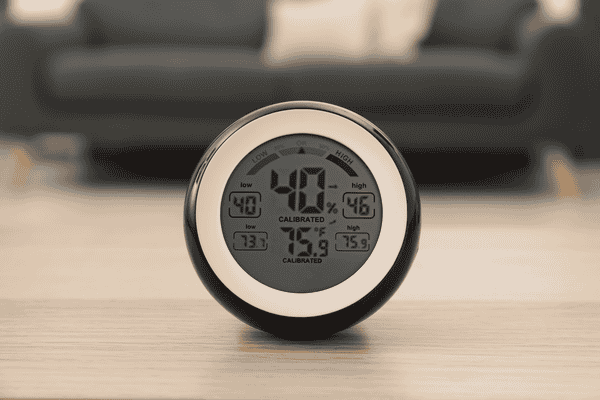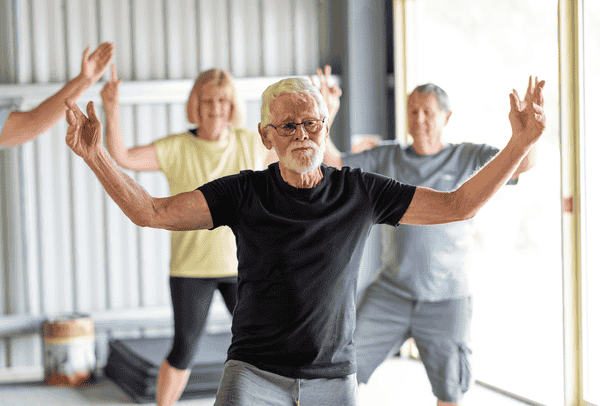As we age, it’s easy to believe that slowing down is inevitable. But staying active is one of the most powerful ways to maintain independence, mobility, and quality of life. Imagine Mary, a retired teacher living in Ontario. She found herself stiff and unsteady after spending winters indoors. After starting a simple daily exercise routine, she not only regained her strength but also felt more confident tackling everyday tasks like grocery shopping and gardening.
If you or a loved one is looking for easy and safe ways to stay active, this article will walk you through exercises that seniors can do right at home to improve mobility, balance, and strength.
Why Staying Active Matters for Seniors
Physical activity is a cornerstone of healthy aging. Research shows that regular exercise helps seniors maintain muscle strength, flexibility, and balance—key factors for preventing falls and injuries. It also boosts mental health, reducing feelings of anxiety or depression and increasing overall happiness.
For seniors in Ontario, staying active is especially important during the long, cold winters, when it’s easy to fall into a sedentary routine. Simple indoor exercises can help keep joints moving, improve circulation, and maintain energy levels, even when going outside isn’t an option.
Guidelines for Safe Exercise
Before jumping into an exercise routine, safety should always come first. Follow these tips to ensure a safe and enjoyable experience:
- Consult Your Doctor: If you have any medical conditions, check with your healthcare provider before starting a new exercise routine.
- Warm Up First: Start with gentle movements to loosen up your joints and prepare your body. A few shoulder rolls or light marching in place works well.
- Wear Comfortable Clothing: Opt for loose, breathable clothing and sturdy, non-slip footwear.
- Stay Hydrated: Keep a bottle of water nearby and take breaks if needed.
- Listen to Your Body: If something feels uncomfortable or painful, stop immediately. Adjust movements to suit your comfort level.
By keeping these tips in mind, you’ll set the stage for safe and effective exercise sessions.
Simple Exercises Seniors Can Try
Here’s a closer look at a variety of exercises seniors can easily incorporate into their routines. Each is designed to promote mobility, balance, strength, and overall fitness. These exercises require minimal equipment and can be done safely at home.
1. Stretching Exercises: Boosting Flexibility and Reducing Stiffness
Stretching is a great way to relieve muscle tension, increase flexibility, and reduce stiffness, especially in the morning. Here are a few stretches seniors can try:
- Neck Stretches: Sit in a chair with your back straight. Slowly tilt your head to the left, bringing your ear toward your shoulder. Hold for 10 seconds and return to center. Repeat on the right side. This helps relieve tension in the neck and shoulders.
- Seated Forward Bend: Sit at the edge of a sturdy chair with your feet flat on the floor. Slowly reach toward your toes, keeping your back straight. Hold the stretch for 15 seconds and return to an upright position. This gently stretches your lower back and hamstrings.
- Chest Opener: Stand or sit upright. Clasp your hands behind your back and gently pull your arms backward, lifting your chest. Hold for 10–15 seconds. This helps open up your chest and improve posture.
- Side Stretch: Sit in a chair with your feet flat on the ground. Place your right hand on your right thigh, then extend your left arm overhead. Gently lean to the right to feel a stretch along your side. Hold for 10 seconds, then switch sides.
2. Balance Exercises: Preventing Falls and Building Confidence
Maintaining good balance can significantly reduce the risk of falls, which are one of the leading causes of injury in seniors. These exercises are simple and effective:
- Heel-to-Toe Walk: Stand next to a wall for support if needed. Place one foot directly in front of the other, heel touching toe, and walk forward 10 steps. Turn around and repeat. This exercise strengthens the muscles used for balance and coordination.
- One-Leg Stand: Hold onto a chair or counter for stability. Slowly lift one foot a few inches off the ground and hold for 10 seconds. Lower your foot and repeat with the other leg. Over time, try to increase the duration of the hold.
- Side Leg Raises: Stand behind a chair and hold onto it for support. Slowly lift one leg out to the side as high as comfortable, keeping your back straight. Lower the leg and repeat 10 times, then switch legs. This improves balance and strengthens hip muscles.
- Tandem Standing: Stand with your feet together, then place one foot directly in front of the other as if standing on a tightrope. Hold this position for 10 seconds, then switch feet. Use a chair for support if needed.
3. Strength-Building Exercises: Staying Strong for Everyday Tasks
Building muscle strength makes daily activities—like climbing stairs, carrying groceries, or getting up from a chair—much easier. Here are some simple strength exercises:
- Wall Push-Ups: Stand facing a wall with your hands shoulder-width apart on the surface. Step back a few feet so your body forms a slight incline. Bend your elbows to bring your chest closer to the wall, then push back to the starting position. Perform 10–15 repetitions.
- Seated Leg Lifts: Sit in a chair with your back straight and feet flat on the floor. Extend one leg straight out in front of you and hold for five seconds, then slowly lower it back down. Repeat 10 times per leg. This strengthens the quadriceps, which are essential for walking and standing.
- Chair Stands: Sit on a sturdy chair with your feet flat on the ground. Cross your arms over your chest. Slowly stand up without using your hands, then sit back down. Repeat 10 times. This strengthens your leg muscles and improves your ability to stand up independently.
- Resistance Band Pulls: If you have a resistance band, sit in a chair and place the band under your feet. Hold the ends in each hand and pull them toward your chest, keeping your elbows close to your sides. Slowly release. Perform 10–12 repetitions.
4. Aerobic Activities: Keeping the Heart Healthy
Aerobic exercises improve cardiovascular health, boost energy levels, and help maintain a healthy weight. Here are some simple options:
- Seated Marching: Sit in a sturdy chair and march in place, lifting your knees as high as comfortable. Swing your arms gently to increase intensity. Aim for 2–3 minutes.
- Indoor Walking: On colder days, walking indoors around your home or hallway is a great way to stay active. Aim for short, brisk walks of 5–10 minutes.
- Light Dancing: Play your favorite song and move to the beat! Dancing not only raises your heart rate but also boosts your mood.
- Step Taps: Stand behind a sturdy chair for support. Tap one foot onto a small step or low platform, then step back. Alternate feet for 1–2 minutes.

Incorporating Exercise into Daily Life
Making exercise a habit doesn’t require drastic changes. Here are a few ways to stay consistent:
- Stretch in the Morning: Start your day with a short stretching routine to loosen up stiff joints.
- Set Small Goals: Commit to just five minutes of activity each day and gradually increase.
- Exercise with a Friend or Caregiver: Staying active with a companion can make the experience more enjoyable and keep you motivated.
- Use Everyday Opportunities: Do balance exercises while brushing your teeth or leg lifts during TV commercials.
Conclusion
Staying active doesn’t require a gym membership or fancy equipment. Simple exercises, done safely and regularly, can help seniors maintain mobility, build strength, and improve overall well-being. Whether it’s a few stretches in the morning or a short walk around the block, every movement counts.
Take it from Mary, who started small but reaped big benefits. She now enjoys gardening again and feels more confident navigating stairs and slippery sidewalks. You can do it too—one step, stretch, or march at a time.
So, lace up your walking shoes or grab a chair and get moving. Your future self will thank you!





